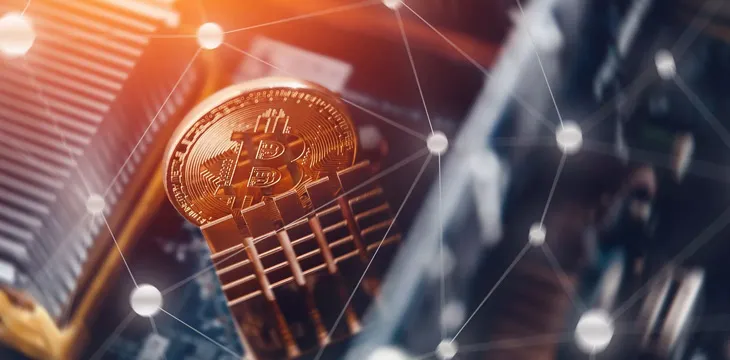|
Getting your Trinity Audio player ready...
|
It’s necessary to write about. One of the primary tenets that underpins Bitcoin’s operation is its Proof Of Work algorithm (PoW for short). But since 2012 there’s been a snowballing movement among many crypto enthusiasts to what is now known as Proof Of Stake (PoS).
PoW creates an economic measure that deters attacks on the network. Due to the nature of the blockchain, for an attacker to re-write history, it would require massive amounts of computational power, which may or may not succeed. The disincentive here is that such an attack would be excessively costly. By all means, the precise manner in which PoW operates in Bitcoin is very much the intention of the designer. Satoshi Nakamoto in his seminal white paper stated that miners “vote with their CPU power”. Miners compete to solve a mathematical puzzle, and are rewarded in Bitcoin for solving this puzzle. The competitive nature of this race to find a block is what deems Bitcoin as a capitalistic system. The bigger the price of Bitcoin, the more competition there will be. And the more competition, the higher the difficulty becomes. This paradoxically balloons into an ever growing, ‘more and more’ robust system, becoming increasingly more difficult, and costly to attack.
Fascinatingly, Satoshi had found a way, to utilise people’s greed, and turned it into a system that actually protects the system. The more competition (and therefore more greed), the more protected the entire system becomes.
Given that the race for hashpower actually protects the system, it is no wonder that Satoshi actually stated that “as the network grows beyond a certain point, it would be left more and more to specialists with sever farms of specialized hardware”.
More specifically, he envisaged ASICs. This is not strange, nor is it unusual. If miners truly do compete with their CPU power, then it is an expected progression point. The competitive nature, implies competitive innovations.
There’s a propaganda at play that likes to make devils of ASIC miners. But ASICs themselves, contrary to what appears to be popular opinion, are not magical devices that give evil miners an unfair advantage. The word ASIC literally stands for “Application Specific Integrated Circuit”. These are CPUs designed specifically for mining. In other words, it is very much what Satoshi referred to when he said “specialized hardware”.
So when we see a variety of digital currencies that operate on PoW claiming to be ASIC resistant, what they’re really doing is they are creating a coin that fights against itself. These ‘coins’ create a competitive mining environment, but also limit just how competitive, and therefore how secure such a blockchain can be. But the propaganda and PR involved in selling ASIC resistance has been rather powerful. Surprisingly, many coins actually sell this aspect (which is a security risk), as a desirable feature!
It was only last week in fact, that the “ASIC resistant” Bitcoin Gold BTG blockchain suffered a horrendous multimillion dollar double spend attack. There couldn’t be a more pronounced evidence based demonstration of the security-risk than a live network attack of this nature.
As we’ve learnt in the crypto space, unfortunately quite often, clever marketing can trump logic and sound argument. So where does that leave PoS algorithms? Does PoS hold water, or is it another clever marketing stunt?
The primary idea behind PoS is that it attempts to bypass the computation intensive mining process with a system that chooses the block creator through various combinations of random selection and wealth and/or age. This translates to an astoundingly energy efficient method for attaining a form of distributed consensus. The question begs, efficient and fair is the method of consensus?
Proponents of PoS argue that it fundamentally achieves the same outcome as PoW with much less energy expenditure. The argument follows that, in the same way that miners spend and invest in hardware, and therefore reap rewards in their competitive advantage, so do forgers (miners) in the PoS system, where the more coin a forger has, the more chance of generating a block. In other words, the rich stand with a competitive advantage to get richer, but PoS advocates claim that this model and competitive advantage is no different to PoW.
They claim, that the model is sufficiently similar, but advantageous in its energy saving merit.
I pose a series of questions at this point:
- Does PoS skip any important steps that are apparent in PoW?
- Is the “rich getting richer” model truly evident in PoW?
- Should coin minting be ‘effectively’ free?
Proof of Work does require investment, like PoS, and that investment, like PoS, can indeed lead to more coin. However, there is an externality that is evident in PoW that is lacking in PoS. What this means is that PoS depends purely on the content of the blockchain to generate more coin for the blockchain. BTC Core developer Gregory Maxwell, interestingly once said “PoS just doesn’t work, it’s a logical tautology. It expects you to use the content of the blockchain to decide the content of the blockchain.” For all of my disagreements with Maxwell on how Bitcoin should work, he is on point here.
Some relatively newer coins have taken note of the lack of external interfaces and have opted for a hybrid model of PoS and PoW. The trouble here is that this hybrid model recognises that PoS is lacking. Does a combination of a lacking algorithm fused with one that is more complete then create a more holistic solution? Another question worth pondering.
But why is externality so important? – It’s simple. PoS requires investment, but PoW requires re-investment. The PoS model creates a centralizing effect where the rich will indefinitely get richer. Although PoW can also have the same effect, the outcome is not as guaranteed.
Write yourself a script, and you can effectively forge coin out of thin air in a PoS environment. With PoW you cannot fall asleep at the wheel. There is a constant race to innovate and remain ahead of the game.
But one interesting advantage that PoW offers is the variance of new players. A small miner for example, with very little stake, may actually discover a new invention, or a new method for mining, which suddenly shifts the balance of power within the mining eco-system. This might be something as simple as a new ASIC type, or something as complex as a quantum computer. It doesn’t matter the advantage. What does matter is that external variance is introduced, and there is no guarantee that the leading miner remains ahead.
On the other hand, PoS systems will most certainly centralize. And it does so at the cost of a proven PoW security model.
I’ve often stated that if you ever want to know the viability of a technical path, you should always take it to its end point. For example, I have stated that if Core’s “store of value” route is viable in the face of high fees, then what happens when the entire population has accumulated BTC, and there is no more money left coming in to support its rising price? Well in this regard, since you can’t transact in a meaningful way, the only thing left to do is sell… This is how we know that the “store of value” narrative is indeed false.
Likewise we can apply the same formula for PoS. Suppose the entire world is invested in some PoS coin. How can any new person compete against an existing forger with a majority stake? There is no new money coming in, making it magnitudes more difficult to enter the forger’s market. And so the question of centralization is answered. The rich get richer, with very little external variance to influence this outcome.
PoW in Bitcoin is a marvel. And we often overlook the genius of this technologically complex, yet economically simple design that makes Bitcoin work. Yes PoW in Bitcoin burns fossil fuels, but so do banks, and so do many large corporations around the world. Bitcoin burns less fuel today than say the Bank of America. And if ever Bitcoin becomes big enough, it will still leave a smaller foot print than the combined effect of the banks of the world.
Finally, printing money should never be free. Value should never, ever, come about from thin air. Mining gold requires effort, it requires work. Likewise, mining Bitcoin should also require effort. Interestingly, the more value that is being mined the more effort that is required. This is consistent with real world mining.
Proof of Stake endangers the cryptoverse of a return to the pitfalls of the fiat system. A system where money is printed in the absence of effort, and a return to a system where money is centralized in the hands of a few.
Eli Afram
@justicemate

 07-15-2025
07-15-2025 





